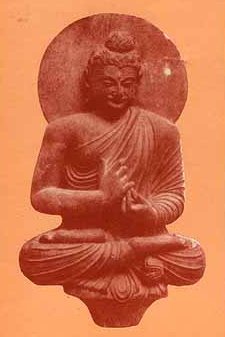Nangula, Naṅgula, Namgula: 3 definitions
Introduction:
Nangula means something in Hinduism, Sanskrit, Buddhism, Pali, Jainism, Prakrit. If you want to know the exact meaning, history, etymology or English translation of this term then check out the descriptions on this page. Add your comment or reference to a book if you want to contribute to this summary article.
Languages of India and abroad
Pali-English dictionary
Source: Sutta: The Pali Text Society's Pali-English DictionaryNaṅgula, (nt.) (Sk. Lāṅg & uhacekmacr; la to laṅga & lagati (q. v.). cp. Gr. laggάzw, Lat. langueo) a tail Th. 1, 113=601 (go°). (Page 345)

Pali is the language of the Tipiṭaka, which is the sacred canon of Theravāda Buddhism and contains much of the Buddha’s speech. Closeley related to Sanskrit, both languages are used interchangeably between religions.
Sanskrit dictionary
Source: Cologne Digital Sanskrit Dictionaries: Edgerton Buddhist Hybrid Sanskrit DictionaryNaṅgula (नङ्गुल).—(= Pali id., for Sanskrit lāṅgula), see go-na°.
Sanskrit, also spelled संस्कृतम् (saṃskṛtam), is an ancient language of India commonly seen as the grandmother of the Indo-European language family (even English!). Closely allied with Prakrit and Pali, Sanskrit is more exhaustive in both grammar and terms and has the most extensive collection of literature in the world, greatly surpassing its sister-languages Greek and Latin.
Prakrit-English dictionary
Source: DDSA: Paia-sadda-mahannavo; a comprehensive Prakrit Hindi dictionaryṆaṃgūla (णंगूल) in the Prakrit language is related to the Sanskrit word: Lāṅgūla.
Prakrit is an ancient language closely associated with both Pali and Sanskrit. Jain literature is often composed in this language or sub-dialects, such as the Agamas and their commentaries which are written in Ardhamagadhi and Maharashtri Prakrit. The earliest extant texts can be dated to as early as the 4th century BCE although core portions might be older.
See also (Relevant definitions)
Ends with: Ghanamgula, Gonangula, Manangula, Pramanangula.
Relevant text
No search results for Nangula, Naṅgula, Namgula, Ṇaṃgūla, Ṇaṅgūla; (plurals include: Nangulas, Naṅgulas, Namgulas, Ṇaṃgūlas, Ṇaṅgūlas) in any book or story.